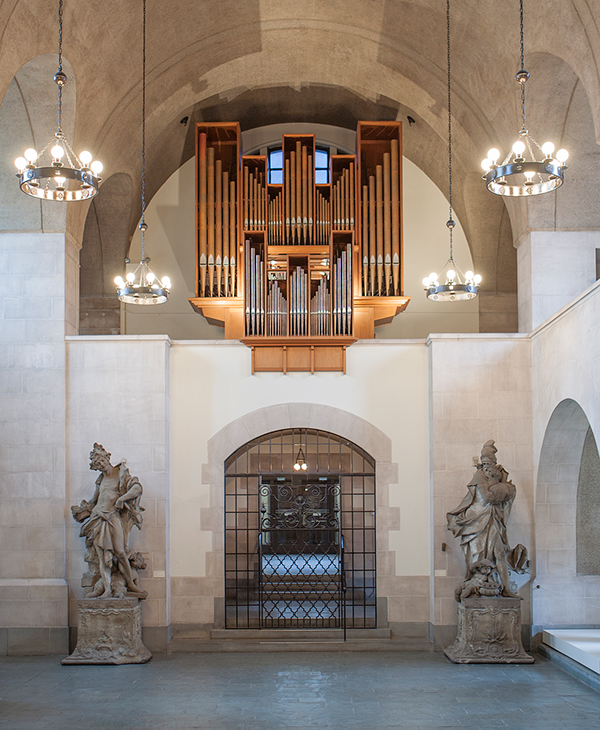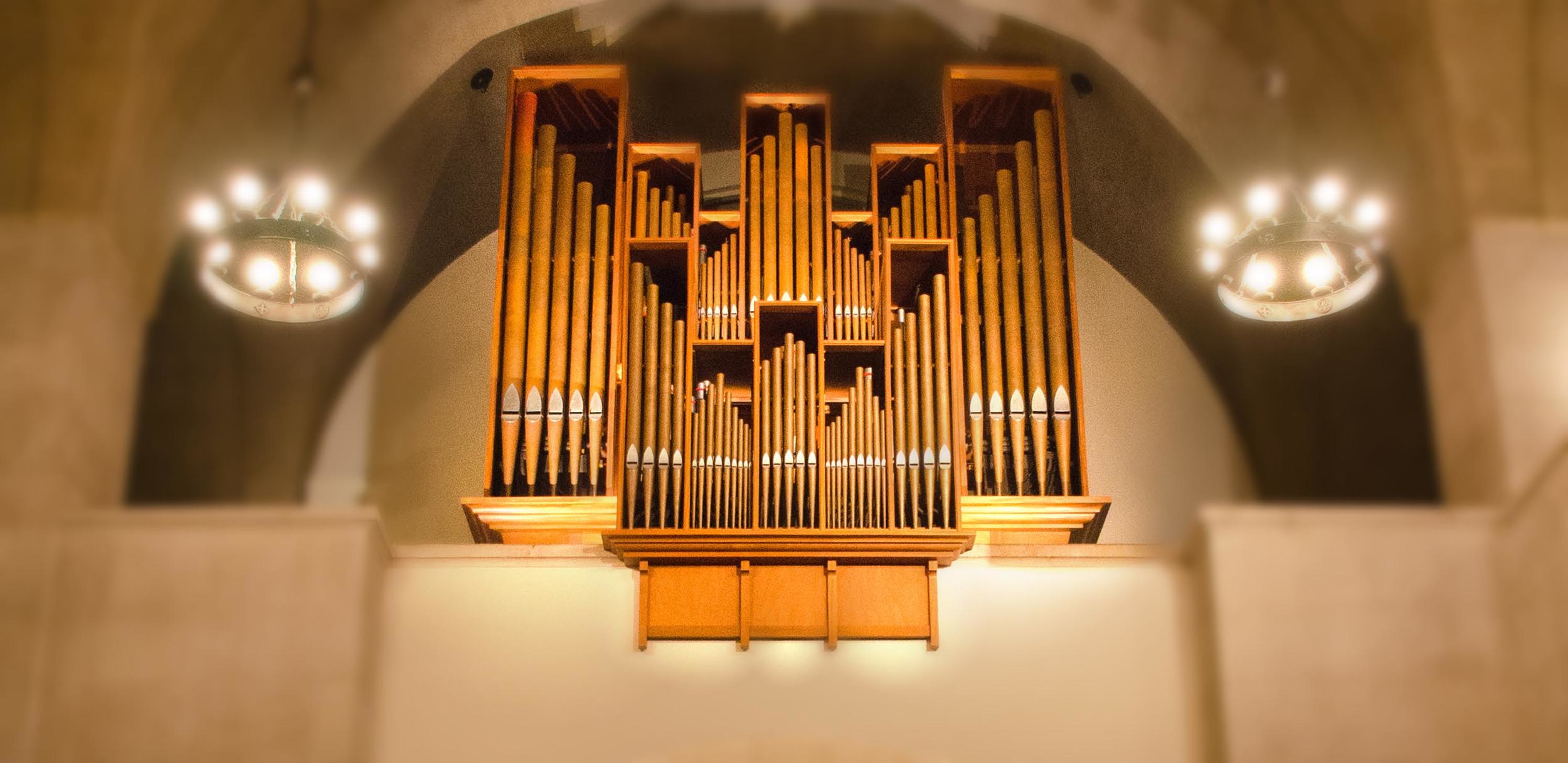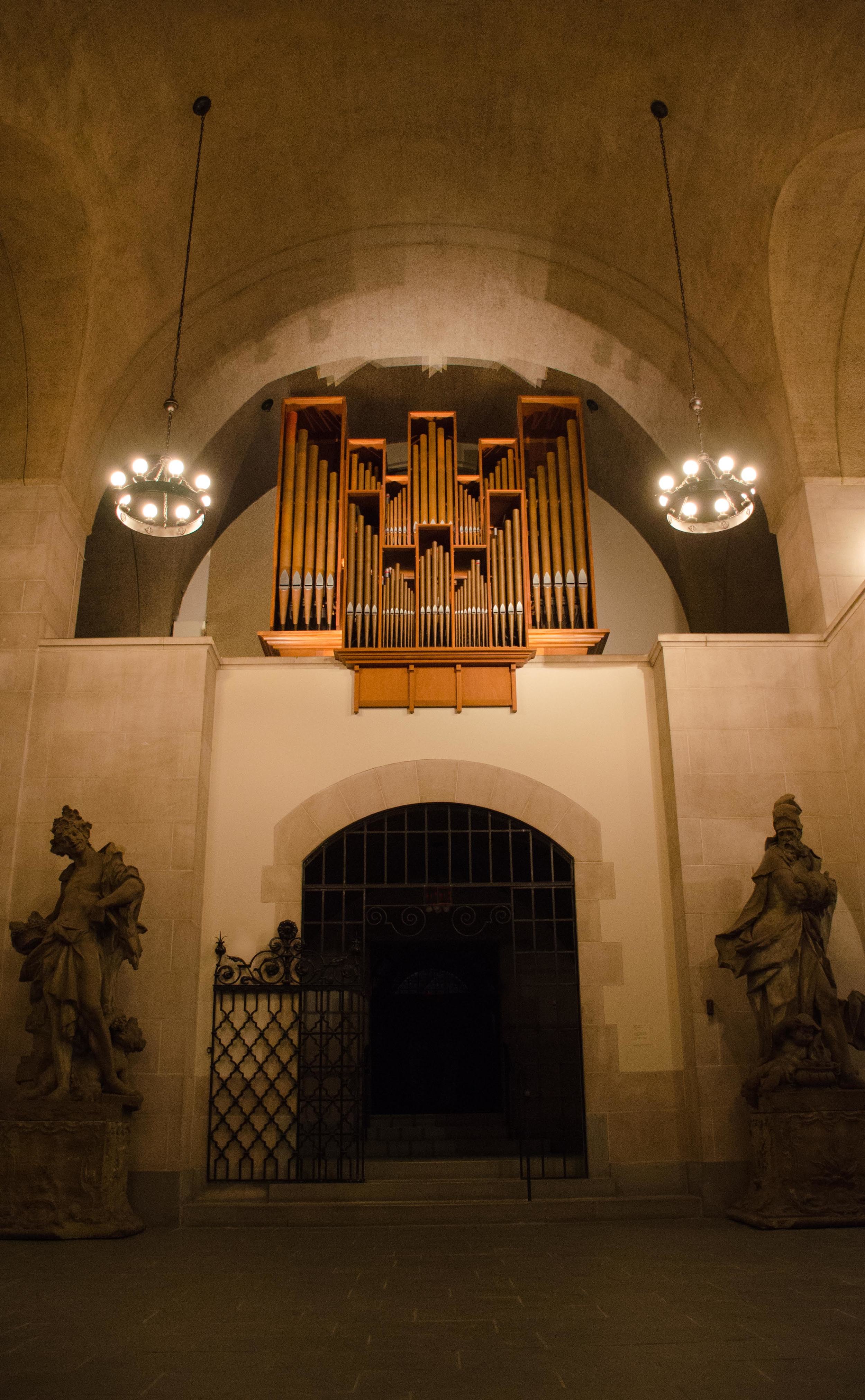E. Power Biggs was without a doubt one of the most famous concert organists of his day; his recordings are still widely available. Many of those recordings were made right here, on this very organ.
Born in England in 1906, Biggs emigrated to the United States in 1930, and settled in Cambridge in 1932. By that time he had already begun to build a name for himself as a touring concert organist.
In 1937, Biggs persuaded Charles Kuhn, then Curator of the Busch-Reisinger Museum, to let the Aeolian-Skinner Organ Company of Boston install their experimental Baroque-style organ, designed by the famous G. Donald Harrison (another Englishman) in the Romanesque Hall, which many people had already realised would make an ideal location for a concert organ. This instrument caused quite a stir in the musical world; Biggs played the complete organ works of Bach on it in 1937/38. In 1940 he began a famous series of Sunday morning coast-to-coast broadcasts on CBS radio from here that for many people of that generation was their introduction to organ music.
In 1954 Biggs made a tour of Europe, playing on many historic organs. This confirmed his growing dissatisfaction with the G. Donald Harrison instrument, and he conceived the notion of commissioning a new instrument for the hall from Flentrop, a Dutch builder whose instruments were known for their inspired re-interpretation of the Baroque models. In 1957 the instrument arrived; in 1958 CBS canceled the weekly broadcasts! Biggs, undaunted, immediately began an ambitious series of recordings for CBS records, which ultimately included three volumes of Bach favourites (including the D minor Toccata and Fugue) and much other music both solo and with other instruments. For many organists these records were their introduction to a new kind of playing, informed by historical scholarship, that came as a revelation. Biggs continued to play recitals and record on this instrument up to his death in 1977.
The instrument is in classic "Werk-prinzip" formation, that is to say, each division is clearly delineated architecturally. The Great manual (Hoofdwerk) is in the middle on top, with the Brustwerk underneath. The big pedal pipes are in towers on either side, and the Rückpositiv (which in England used to be called the "Chaire" organ) is on the front of the gallery, behind the organist's seat. The stops are all those which Bach would have known, and the connection between keys and pipes is entirely mechanical ("Tracker")—unlike the G. Donald Harrison instrument, which had electric action. The pipes, voiced on low wind pressure and placed on the historic form of slider chests, have a gentle, alive quality of sound, and the open-toe, unnicked voicing gives an articulate quality. This instrument was among the first examples (and for many years by far the most prominent) of the "Baroque" or historical organ revival; Flentrop subsequently installed many other instruments throughout the United States. This organ therefore had and continues to have a profound effect on organ building and organ playing throughout this country. - from the Harvard Organ Society website




